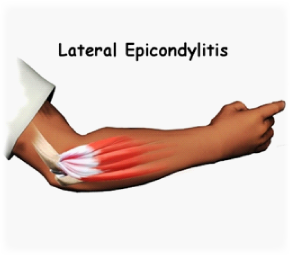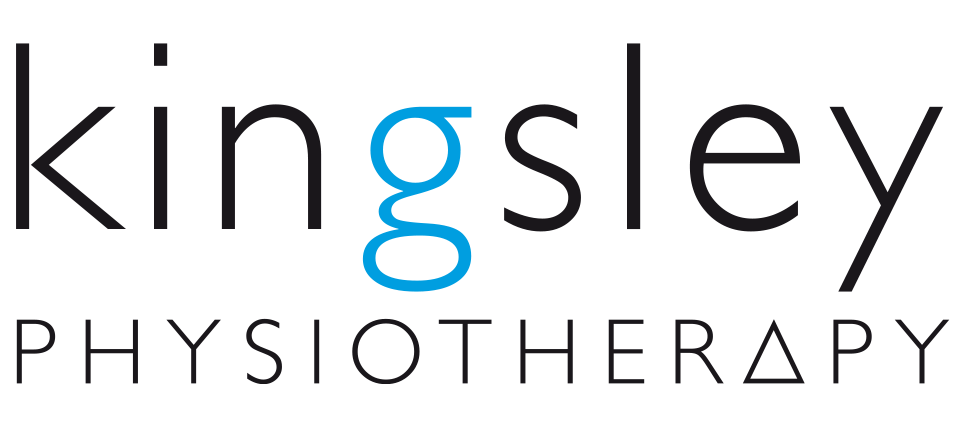Tennis Elbow – lateral epicondylalgia
What is tennis elbow?
The most common cause of pain on the outer part of the elbow can be attributed to this condition. Tennis elbow (also called lateral epicondylitis) commonly presents between the ages of 30 and 60 and results in pain on the outer (lateral) bony prominence of the elbow (epicondyle). A similar pathology affecting the inner (medial) epicondyle results in golfers elbow – medial epicondylitis.
Typically patients will complain of local tenderness over the lateral epicondyle and pain with common daily activities such as gripping or lifting objects. It is a progressive condition and symptoms may take several weeks or months to fully develop. Accordingly, the problem is often chronic (long standing) by the time people seek treatment. This is less than ideal and is one of the reasons this condition can prove so difficult to treat by conservative (non-surgical) means.
What causes tennis elbow?
There continues to be some debate about the precise cause of tennis elbow. It is often suggested that it is precipitated by repetitive use (or relative overuse) of the wrist and forearm muscles. Tennis (or other racquet sports) seems to provide the ideal climate for such repetitive stresses but in reality the overwhelming majority of presentations have no association with such sports. More commonly sufferers will be unable to identify a specific causative event.
 Inflammation and even small tears of the extensor carpi radialis brevis muscle as it attaches to the lateral epicondyle may be present on MRI. This obscure but influential muscle has a comparatively small area of attachment to the bone at its origin. It is speculated that because of this it is more vulnerable and more readily traumatised by ballistic, rapid contractions such as may be seen in racquet sports.
Inflammation and even small tears of the extensor carpi radialis brevis muscle as it attaches to the lateral epicondyle may be present on MRI. This obscure but influential muscle has a comparatively small area of attachment to the bone at its origin. It is speculated that because of this it is more vulnerable and more readily traumatised by ballistic, rapid contractions such as may be seen in racquet sports.
Because tennis elbow is frequently left untreated until several months (or years) after the onset of symptoms, it is not uncommon to see concurrent enthespoathic changes on MRI or even plain film x-rays (see “Achilles tendontits and enthesitis” for further information on enthesopathies). It is also arguable that because this enthesitic change goes undiagnosed in the vast majority of cases (because seldom is imaging other than ultrasound ever recommended for this condition) that the difficulty in treating tennis elbow comes from a misunderstanding of the pathology itself. In other words (and please bare with me as I theorise out-loud) one of the reasons that conservative practitioners may find this condition so challenging to treat is because we (in the medical profession) are treating it as purely a tendon inflammation (a relatively straight forward condition to treat) when instead we should be looking at it as a condition that brings about changes to multiple tissues – the periostium (outer bone layer), the enthesopathic junction AND the tendon(s). Instead of treating it with purely anti-inflammatory modalities (medications, injections etc) perhaps we need to focus on interventions such as shock wave diathermy or prolotherapy either in isolation or in conjunction with steroid or botox administration.
What is the physiotherapy management of tennis elbow?
Another problem with treating tennis elbow is that so many other conditions can lead to pain on the outer margin of the elbow – many of which mimic very closely the presentation of this condition. I recall an exam at university where students were asked to consider as many causes of lateral elbow pain as possible. I was chuffed to come up with around 20 but was shot down when the lecturer listed over 50. The role of physiotherapy in the management of lateral epicondylitis therefore is to not only exclude other pathologies that present in a similar fashion (eg radial neuropathy, rheumatoid arthritis, osteoarthritis and cervical neuropathies to name a few) but also to ascertain if other pathologies co-exist. This can dramatically alter the course of treatment.
Your physiotherapist will take a detailed history and perform an examination of the elbow, wrist, shoulder and neck. You will then be taken through a neurological examination of the affected arm and taken through some movements to provoke your symptoms – pain may be induced by passive wrist flexion and resisted wrist extension (both movements are performed with the elbow extended).
Your physiotherapist will then elicit contraction of the individual muscles that originate from the lateral epicondyle to see if there is multiple tendon involvement (extensor carpi radialis brevis, extensor carpi ulnaris, extensor digiti minimi and extensor digitorum).
Treatment by your physiotherapist may be multifaceted and involve not only work to the elbow and forearm extensor muscles but also to the shoulder and neck. Local treatment will include releasing the extensor muscles of the forearm and mobilisation of the radio-humeral and superior radio-ulna joints. Traction to the elbow joint may also be utilized though this must be done with caution and by a trained health professional. The patient will be given stretches for muscles of the forearm and biceps and may also be provide with an elbow brace. There are numerous braces available for this condition and it is imperative that the correct one be prescribed. Patients may also be advised to use non-steroidal anti-inflammatory medication during their recovery.
Once symptoms have settled, your physiotherapist will instruct you to perform an eccentric strengthening programme for the wrist extensor muscles of the forearm. This routine is one of the few well researched programmes for tennis elbow and works to settle minor pain of tennis elbow and to prevent reoccurrence in the future.
Finally, you will also be advised on various ergonomic factors that may be relevant to your particular situation – advice on work-station setup, training regimes, racquet string tension and grip circumference etc.
Complete resolution of symptoms may take up to 3 or 4 weeks though progress should be steady during this time. There is a considerable amount of intervention that can be carried out by a third party during the recovery period. For this reason it pays to attend your physiotherapy sessions with a partner who can assist you with home-based treatments that will dramatically reduce the cost of your recovery.
What about stubborn, persistent or recurring tennis elbow?
Your physiotherapist will also discuss medical and surgical options for the management of tennis elbow if improvement is not forthcoming. These may include local steroid injections, botox injections to the extensor muscles of the forearm, prolotherapy or shock wave diathermy. All of these interventions continue to be researched but may provide considerable relief when applied correctly and with appropriate follow-up rehabilitation advice. Often an ultrasound image of the elbow will be requested before these interventions can be considered to rule out other similar pathologies including tearing of the extensor tendon(s).
If you have any further questions on this subject, or you would like to contact the physiotherapist best suited to managing your problem please call or email us.
© Andrew Thompson





